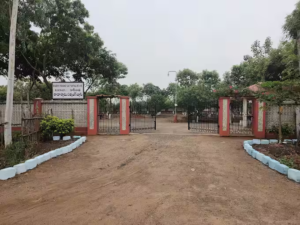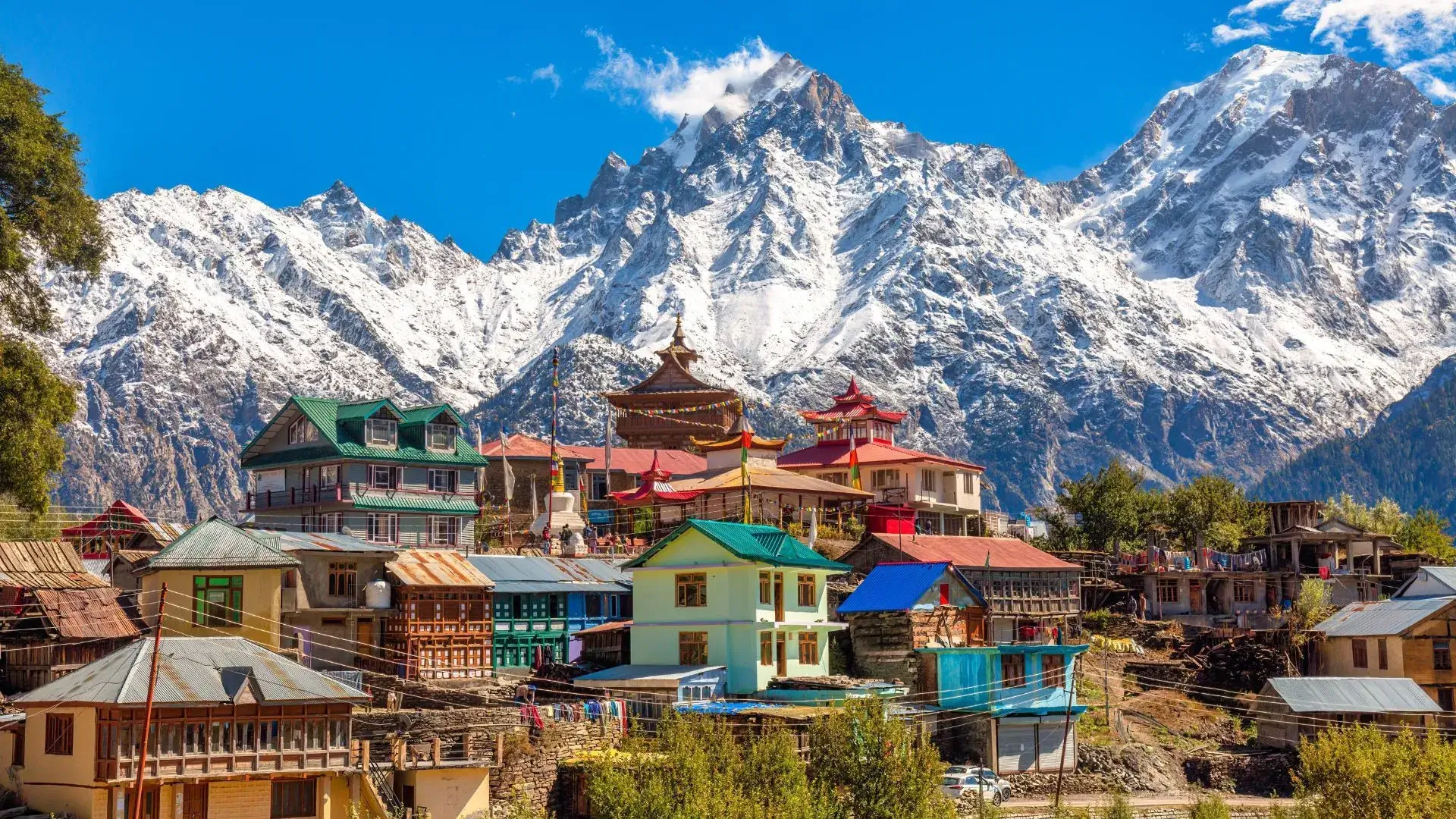Nestled in the lap of the Western Himalayas, Himachal Pradesh is not just a haven for nature lovers and adventure seekers, but also a spiritual sanctuary. The state’s landscape is dotted with ancient temples, serene monasteries, and revered sacred sites that offer a profound spiritual experience. Join us on a journey through some of the most significant spiritual destinations in Himachal Pradesh.
- Hidimba Devi Temple, Manali
Located in the picturesque town of Manali, the Hidimba Devi Temple is a unique wooden structure dedicated to Hidimba Devi, wife of Bhima from the Mahabharata.
Architecture: The temple is a fine example of traditional hill architecture, with its pagoda-shaped roof and intricate wood carvings.
Spiritual Significance: It’s believed that prayers offered here are quickly answered, especially those related to marriage and childbirth.
Best Time to Visit: April to October
Tip: Visit early in the morning to avoid crowds and enjoy the serene atmosphere.
- Tso Pema (Rewalsar Lake), Mandi
Tso Pema, also known as Rewalsar Lake, is a sacred site for Hindus, Sikhs, and Buddhists alike.
Spiritual Significance:
- For Buddhists: Associated with Padmasambhava, who introduced Buddhism to Tibet.
- For Hindus: Linked to sage Lomas and has temples dedicated to Lord Shiva.
- For Sikhs: Connected to Guru Gobind Singh, who spent a month here.
Attractions: The lake is surrounded by monasteries, temples, and a gurudwara.
Best Time to Visit: March to June and September to November
Tip: Take a boat ride on the lake for a unique perspective of the surrounding sacred sites.
- Naina Devi Temple, Bilaspur
Perched atop a hill, the Naina Devi Temple is one of the 51 Shakti Peethas in India.
Legend: It’s believed that Sati’s eyes fell here when Lord Shiva carried her charred body.
Spiritual Significance: Devotees believe that the goddess fulfills all wishes of her true devotees.
Best Time to Visit: March to October
Tip: Visit during Navaratri to experience grand celebrations.
- Tsuglagkhang Complex (Dalai Lama’s Temple), McLeod Ganj
The spiritual heart of the Tibetan community in exile, this complex houses the Dalai Lama’s residence and main temple.
Key Features:
- Namgyal Monastery: Where monks engage in intensive study and meditation.
- Tibet Museum: Showcases the history and culture of Tibet.
- Kalachakra Temple: Known for its beautiful murals.
Best Time to Visit: March to June and September to November
Tip: Check the Dalai Lama’s teaching schedule; attending a session can be a profound experience.
- Jwalamukhi Temple, Kangra
Dedicated to the goddess of light, this temple is famous for its eternal flame.
Unique Feature: The temple has no idol; instead, the eternal flame is worshipped as a manifestation of the goddess.
Spiritual Significance: It’s one of the 51 Shakti Peethas and is believed to fulfill devotees’ wishes.
Best Time to Visit: March to June and September to November
Tip: Witness the evening aarti for a mesmerizing experience.
- Key Monastery, Spiti Valley
Perched at an altitude of 4,166 meters, Key Monastery is the largest and oldest monastery in the Spiti Valley.
Architecture: The monastery showcases a unique blend of Tibetan and Indian architectural styles.
Spiritual Significance: It’s an important center for Buddhist studies and houses valuable ancient murals and scriptures.
Best Time to Visit: June to September
Tip: Stay overnight in the monastery for a truly immersive experience (advance booking required).
- Chamunda Devi Temple, Kangra
Located on the banks of the Baner River, this temple is dedicated to Goddess Chamunda, a form of Durga.
Legend: It’s believed that Chamunda Devi defeated demons Chand and Mund here.
Spiritual Significance: The temple is known for its powerful spiritual energy and is believed to grant boons to sincere devotees.
Best Time to Visit: March to June and September to November
Tip: Combine your visit with a trip to nearby Kangra Fort.
- Bijli Mahadev Temple, Kullu
Situated atop a hill, this temple offers panoramic views of the Kullu and Parvati valleys.
Unique Feature: The Shiva lingam in the temple is regularly struck by lightning, giving the temple its name (Bijli means lightning).
Spiritual Significance: It’s believed that the lightning purifies the lingam and the priest reconstructs it using butter and sattu.
Best Time to Visit: April to November
Tip: The trek to the temple is steep but rewarding; start early to avoid afternoon heat.
- Tabo Monastery, Spiti Valley
Often called the ‘Ajanta of the Himalayas’, Tabo Monastery is over 1000 years old and is known for its exquisite murals and stucco sculptures.
Key Features:
- Nine temples within the complex
- Ancient Buddhist scriptures and artwork
- A modern guest house for visitors
Spiritual Significance: It’s an important center for Buddhist learning and houses priceless Thankas (Buddhist paintings).
Best Time to Visit: June to September
Tip: Don’t miss the Assembly Hall (Du-kang) with its stunning wall paintings.
- Manimahesh Lake, Chamba
Located at the foot of Manimahesh Kailash Peak, this high-altitude lake is considered sacred by both Hindus and Sikhs.
Spiritual Significance:
- For Hindus: Believed to be the abode of Lord Shiva
- For Sikhs: Associated with Guru Gobind Singh
Best Time to Visit: August-September (during the annual Manimahesh Yatra)
Tip: The trek to the lake is challenging; ensure proper acclimatization and physical fitness.
- Chintpurni Temple, Una
One of the most revered Shakti Peethas, Chintpurni Temple is dedicated to Mata Chintpurni, believed to be a manifestation of Durga.
Spiritual Significance: It’s believed that the goddess removes all worries (chinta) of her devotees.
Best Time to Visit: March to June and September to November
Tip: Visit during Navaratri for a grand spiritual experience.
- Norbulingka Institute, Dharamshala
While not a traditional religious site, Norbulingka is crucial for preserving Tibetan spiritual and cultural heritage.
Key Features:
- Traditional Tibetan arts and crafts workshops
- Beautiful Japanese-style gardens
- Deden Tsuglakhang (temple) with stunning murals
Spiritual Significance: It plays a vital role in preserving and promoting Tibetan Buddhist culture.
Best Time to Visit: March to June and September to November
Tip: Participate in a meditation session or attend a talk on Tibetan Buddhism.
- Baijnath Temple, Kangra
This ancient temple dedicated to Lord Shiva as Vaidyanath, the ‘Lord of Physicians’, dates back to the early 13th century.
Architecture: The temple is a fine example of the Nagara style of architecture.
Spiritual Significance: It’s believed that prayers for healing are especially powerful here.
Best Time to Visit: Year-round, but especially beautiful during spring (March-April)
Tip: Visit during Mahashivratri to witness grand celebrations.
- Trilokinath Temple, Lahaul and Spiti
This unique temple is revered by both Hindus and Buddhists, showcasing the syncretic nature of Himalayan spirituality.
Unique Feature: The main deity is worshipped as Shiva by Hindus and as Avalokiteshvara by Buddhists.
Best Time to Visit: June to September
Tip: Combine your visit with a trip to nearby Udaipur (Himachal Pradesh, not to be confused with the city in Rajasthan).
- Bhimakali Temple, Sarahan
This temple complex, dedicated to goddess Bhimakali, is a fine example of Kathkuni architecture (a blend of stone and wood).
Unique Feature: The temple houses a collection of ancient weapons and musical instruments.
Spiritual Significance: It’s believed that the goddess protects the region and its people.
Best Time to Visit: April to October
Tip: Climb to the top floor of the temple for panoramic views of the surrounding mountains.
Preparing for Your Spiritual Journey:
- Respect Local Customs: Dress modestly and follow local customs when visiting religious sites.
- Timing is Key: Many temples have specific opening hours and may close during the afternoon. Plan your visits accordingly.
- Photography Rules: Always ask before taking photographs, especially inside temples and monasteries.
- Altitude Considerations: Many spiritual sites are at high altitudes. Allow time for acclimatization and be aware of altitude sickness symptoms.
- Guided Tours: Consider hiring a knowledgeable local guide to deepen your understanding of the spiritual significance of these sites.
- Festivals and Events: If possible, time your visit to coincide with local spiritual festivals for a more immersive experience.
- Meditation and Retreats: Many monasteries offer meditation courses and retreats. Research in advance if you’re interested in participating.
- Respect the Environment: Practice responsible tourism. Many of these sites are in ecologically sensitive areas.
Himachal Pradesh’s spiritual landscape is as diverse as its natural one. From ancient Hindu temples perched on mountaintops to serene Buddhist monasteries nestled in remote valleys, the state offers a spiritual journey that transcends religious boundaries. These sacred sites are not just places of worship; they are repositories of art, architecture, and centuries-old traditions.
As you embark on this spiritual journey through Himachal Pradesh, you’ll find that spirituality here is deeply intertwined with nature. The towering mountains, pristine lakes, and flowing rivers are as much a part of the spiritual experience as the temples and monasteries themselves. This connection between the natural and the spiritual is perhaps what makes a pilgrimage in Himachal Pradesh so unique and profound.
Moreover, the spiritual sites of Himachal Pradesh offer a glimpse into the rich tapestry of India’s religious diversity. Here, Hinduism, Buddhism, and Sikhism coexist harmoniously, often blending and influencing each other. This syncretic approach to spirituality is most evident in places like the Trilokinath Temple, revered by both Hindus and Buddhists.
For those seeking a deeper spiritual experience, many of these sites offer opportunities for meditation, yoga, and spiritual retreats. The serene environment of the Himalayas provides an ideal backdrop for introspection and spiritual growth.
As you visit these sacred sites, remember that you’re not just a tourist, but a pilgrim on a spiritual journey. Take the time to sit in quiet contemplation, participate in rituals if invited, and engage with local devotees and spiritual leaders. Their stories and insights can add depth to your understanding of these sacred places.
Whether you’re drawn by faith, curiosity, or a search for inner peace, a spiritual journey through Himachal Pradesh promises to be a transformative experience. As you traverse this land of gods and goddesses, of ancient wisdom and timeless traditions, you may find that the journey is as much inward as it is outward.
So pack your bags, open your heart, and set out on a spiritual odyssey through the mountains of Himachal Pradesh. Who knows what revelations await you in the shadow of these ancient peaks, where the earthly and the divine seem to meet?










